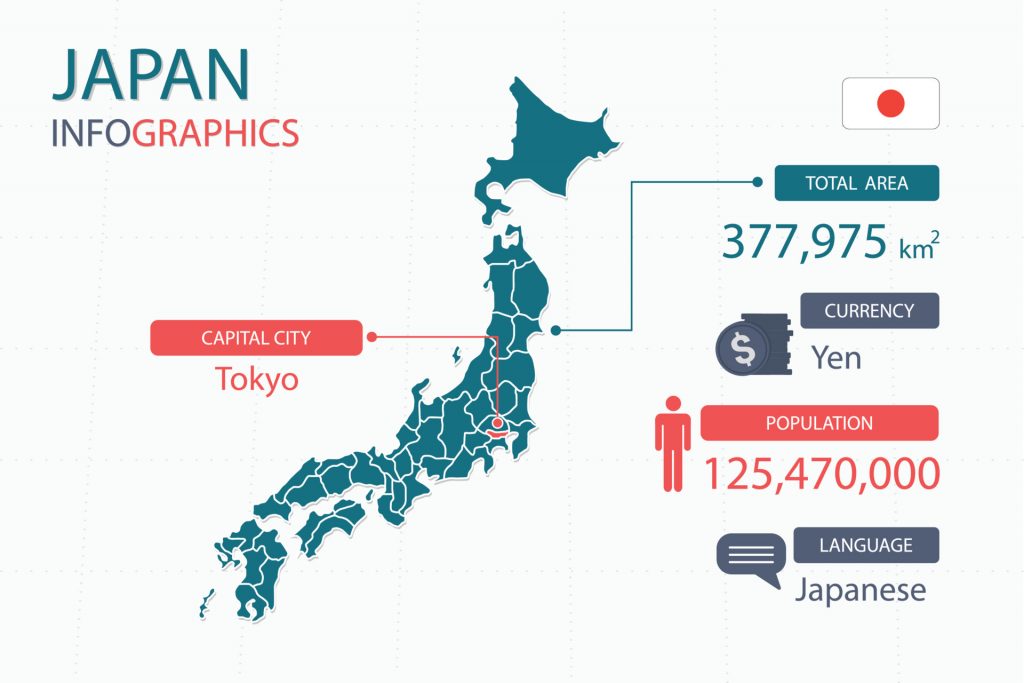The origins of the Japanese Language
Japanese is a language spoken by approximately 125 million people. While primarily used as the de facto national language of Japan, the Japanese language is used in various international contexts due to the diffusion of Japanese language media such as animation and music, and the role of Japan in politics and business both regionally and internationally.
Japanese belongs to the Japonic language family, which includes other languages and dialects spoken in Japan such as the Ryukyuan languages in Okinawa. At the same time, other scholars place Japanese and other languages in the region, such as Korean, in the same family. This is due to perceived similarities with the grammar, vocabulary, and other aspects. Yet other linguists consider Japanese to be an isolate because of a lack of genealogical evidence of the evolution of the language. Due to such uncertainty and a plethora of theoretical outlooks, a clear classification of Japanese in terms of language genealogy is not yet agreed upon. Our Japanese Manga translators have the necessary experience to properly convey the intent on the source content to perfectly translated Japanese.
The Japanese writing system consists of three separate systems that combine to work as one whole: Hiragana, Katakana, and Kanji. Hiragana and Katakana, derived from Chinese characters, consists of symbols that represent syllables of the spoken language. Hiragana usually represents grammatical aspects of the language while Katakana represents words of a foreign origin or sound effects. Katakana is also employed for emphasis and certain nuances, such as negativity, among other uses. Kanji, on the other hand, consists of Chinese characters that represent concepts and is used to transcribe the majority of vocabulary items in the Japanese language. In addition, the Latin script, called Romaji, is also used for such aspects as acronyms, although the use of Romaji is much less common compared to the other scripts. Japanese is written either from left-to-right, like many Western languages, or from top-to-bottom, in which case the columns start from the right of the page.

The history of the Japanese language can be roughly divided into four phases: Old Japanese, Early Middle Japanese, Late Middle Japanese, Early Modern Japanese, and Modern Japanese being translated today.
Old Japanese is characterized by its introduction of Chinese characters, Early Middle Japanese by the continuation of Chinese influence in terms of writing, phonology, and vocabulary, Late Middle Japanese by the introduction of loan words from European loanwords, Early Modern Japanese by evolutions in their writing system (the development of the two kana syllabaries), and Modern Japanese by the widespread use of a standardized and unified language among all of Japan.
Japanese can be traced back to old Japanese in the 8th century. It was mainly written using Chinese characters, before the creation of the two syllabaries. Chinese characters were brought from scholars from the mainland and through Korea due to the spread of Buddhism throughout Asia. Because of the introduction of Chinese characters, and with it Chinese culture and language, there was an influence on other linguistic characteristics of Japanese as well, such as the pronunciation of words, vocabulary, and more.
Throughout the history of Japan, and especially during the evolution of the Japanese language, the two syllabaries, Hiragana and Katakana, were derived from the Chinese characters. In addition, due to Japan participating in trade with other countries, Japanese absorbed vocabulary from a variety of other languages, ranging from Korean to Portuguese. These words now form the basis of a core vocabulary that is used in everyday speech.
While Japanese has been primarily used only in Japan throughout history, it has also been exported to other regions, such as Korea, certain parts of Mainland China, Taiwan, and Southeast Asia, specifically due to Japanese colonization during World War II. As a result, older generations in these areas still retain some fluency in the Japanese language. Japanese is also spoken by populations in certain regions and territories of the United States of America, such as in Hawaii and Guam, due to the prevalence of ethnic Japanese immigration populations in these areas.
Japanese is considered an agglunative language. To contrast this with English, suffixes attach onto words to express more nuanced meanings, and words can end up becoming very long. Thus, the Japanese grammar and syntax can be quite challenging to speakers who are more used to Western languages, such as English. In addition, the Japanese word order is quite different compared to Western European languages; the verb always comes at the end and other aspects come before it, including the subject and object. However, there is much flexibility for some ordering, especially in the spoken language. Along with other grammatical and vocabulary characteristics, Japanese can be considered quite a unique language among the worlds’ languages.
Modern Japanese can be characterized by many unique characteristics including its prominent use of vocabulary and grammar to signify politeness or social position, which is reflected in both the spoken and written languages. The language can express different aspects of social status, including age, job position, experience, familiarity, and more. These expressions are an integral part of Japanese society and culture and have an effect on everyday interactions in a variety of contexts, such as school, workplaces, customer-client interaction, and even among family members.
Japanese has a long tradition of literature, both in ancient times and modern times. Ancient Japanese literature stems from classical Chinese works, and modern literature contains influences of both older Japanese literature and international aspects. Currently, Japanese literature enjoys a fan-base that not only exists in Japan but also internationally.
In recent times, Japanese is used prevalently in certain industries internationally, including business and entertainment, due to the prominence of Japanese technological companies. Therefore, knowledge of the language and culture is useful for successful business relationships and transactions. Many Japanese concepts, and therefore expressions, have also been transferred to mainstream culture such as sushi, karate, manga comics, anime, karaoke, the music industry, and much more.
VEQTA can provide you with a perfect Japanese translator for your Japanese translation, English to Japanese translation and Japanese to english translation for the your targeted locale. Our translations to Japanese are created with your target audience in mind to meet your expectations.
If you need to translate Japanese – Get in touch today!
A dedicated team of Japanese translators who combines Experience, Specialized Subject Matter Expertise with best Translation Practices to deliver quality second to none.
Japanese Document Translation
Japanese Legal Translation
Japanese I.T Translation
Japanese Health & Fitness Translation
Japanese Medical Translation
Japanese Marketing Translation
Japanese Financial & Accounting Translation
Japanese Tourism & Travel Translation


